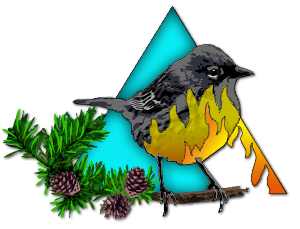Navigation

Upcoming Events
There are no events planned.
Webinar Archive

The above photo shows the type of active fire behavior in Jack Pine and Red Pine that is observed during the ‘spring dip’ period.
Assessing the drivers of the ‘spring dip’ in foliar moisture content and their potential impact on forest fire behavior
W. Matt Jolly, PhD
Research Ecologist
USFS, RMRS, Fire Sciences Laboratory
Fire, Fuel and Smoke Science Program
5775 Hwy 10 W
Missoula, MT 59808
406-329-4848
email
Webinar presented Thursday, February 20, 2014 (2:00PM ET/1:00PM CT)
Fast facts:
- Foliar moisture content changes are driven by changes in density
- Density changes are primarily due to an increase in starch
- Starch content may be the missing link in the increased flammability during the Spring Dip
- Density or LFM can be measured throughout the season as a proxy for starch content changes
- Dip timing is not constant and it is most likely a function of spring soil and air temperatures
- Can we model the timing and length of the dip?
- Fire management decisions could be improved by incorporating a live fuel monitoring program and by extending the depth of the current study
- More interest and support is needed to learn how these factors vary throughout the Great Lakes region
YouTube Recording
PDF of presentation
Related Readings
Van Wagner, C. E. 1967. Seasonal variation in moisture content of eastern Canadian tree foliage and the possible effect on crown fires. Canada Department of Forestry and Rural Development, Forestry Branch Departmental Publication No. 1204, Petawawa Forest Experiment Station, Chalk River, Ontario. 22p.

.png)